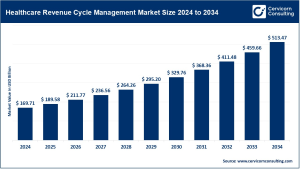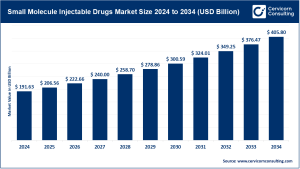Single-Use Bioprocessing Market Overview
The global single-use bioprocessing market was valued at around USD 33.82 billion in 2024 and is projected to soar to approximately USD 104.86 billion by 2034, growing at a compound annual growth rate (CAGR) of 11.98% between 2025 and 2034. The rising adoption of flexible, cost-efficient, and contamination-free biomanufacturing solutions is transforming the production landscape for biologics, vaccines, and cell therapies.
Get a Free Sample
Key Market Trends
1. Expansion of Continuous and Modular Bioprocessing
The integration of single-use technologies (SUTs) with continuous bioprocessing is redefining manufacturing efficiency. Companies are embracing modular bioprocessing systems that allow faster setup, scalability, and smooth transitions between product lines—ideal for multi-product and flexible manufacturing environments.
2. Rising Use in Cell and Gene Therapy (CGT) Manufacturing
The surge in cell and gene therapy pipelines is increasing the need for small-volume, high-sterility production systems. Single-use reactors, mixers, and filtration assemblies enable rapid changeovers with minimal validation requirements, making them vital for agile CGT facilities.
3. Sustainability and Green Manufacturing Initiatives
In response to stricter environmental regulations, leading manufacturers are developing biodegradable and recyclable polymers for single-use systems. Companies like Sartorius and Merck are incorporating lifecycle assessment tools to minimize carbon emissions and promote sustainable bioprocessing.
4. Automation and Digital Integration
The fusion of IoT sensors, AI-driven analytics, and real-time monitoring in single-use systems is enhancing predictive maintenance, process control, and yield optimization. These digital integrations also help manufacturers maintain regulatory compliance while improving operational consistency.
5. Increasing Outsourcing to CDMOs
With the rapid rise in biologics production, pharmaceutical firms are increasingly outsourcing manufacturing to Contract Development and Manufacturing Organizations (CDMOs). These organizations specialize in flexible, single-use-based production facilities, accelerating global market adoption.
Market Drivers
1. Growth in Biologics and Vaccine Production
Over 50% of drugs in development are biologics-based, creating unprecedented demand for scalable, contamination-free bioprocessing. Single-use systems allow faster product turnaround and minimize cross-contamination risks—ideal for multi-product biologics facilities.
2. Cost Efficiency and Operational Flexibility
Single-use bioprocessing can reduce capital costs by up to 40% and cut turnaround times by 60% compared to traditional stainless-steel setups. This cost advantage is especially compelling for emerging biotech companies seeking rapid market entry.
3. Regulatory and Government Support
Regulatory agencies such as the FDA and EMA are actively supporting flexible manufacturing approaches, particularly for rapid vaccine deployment and emergency response—further driving single-use system adoption post-pandemic.
4. Technological Advancements
Continuous innovations in film materials, sensor integration, and large-scale reactors (up to 6,000 L) have expanded single-use technologies beyond pilot applications to commercial-scale biologics production.
5. Global Expansion of Biomanufacturing Infrastructure
Countries like China, India, and South Korea are investing heavily in single-use facilities under national biotech strategies, making Asia-Pacific the fastest-growing regional market.
Impact of Trends and Drivers
-
Regional Impact: North America maintains market leadership due to advanced biopharma infrastructure, while Asia-Pacific emerges as a high-growth hub with cost-effective production capacity and supportive government policies.
-
Application Impact: Biopharmaceutical manufacturing remains the dominant application, while cell and gene therapy production represents the next growth frontier.
-
End-User Impact: CDMOs and biotech startups gain the most, leveraging single-use technologies for agility, scalability, and faster time-to-market.
Challenges and Opportunities
Challenges:
-
Plastic waste and recyclability issues
-
Supply chain constraints for specialized polymer films
-
Lack of standardization and interoperability across single-use components
Opportunities:
-
Development of biodegradable single-use materials
-
Emergence of hybrid reusable systems
-
Integration of AI and machine learning for intelligent bioprocess control
Future Outlook
The single-use bioprocessing market is set for exponential expansion, underpinned by biologics innovation, automation, and sustainable production models. By 2034, the market is forecasted to exceed USD 100 billion, with digitalization, hybrid system integration, and eco-friendly materials defining the next wave of biomanufacturing evolution.
For a Detailed Overview, Contact Us


